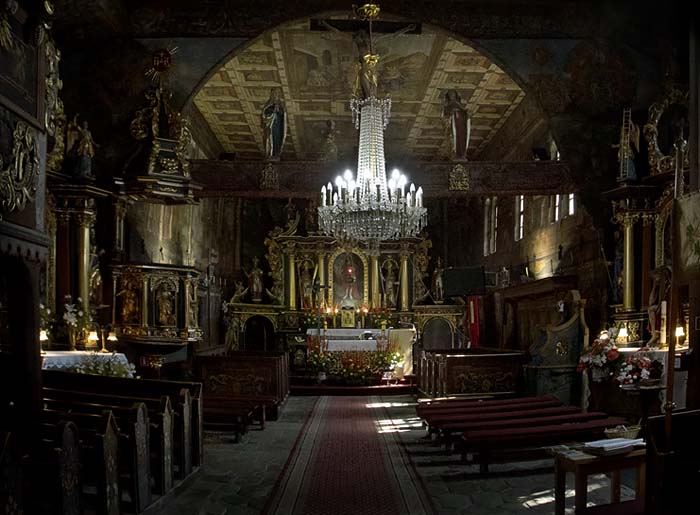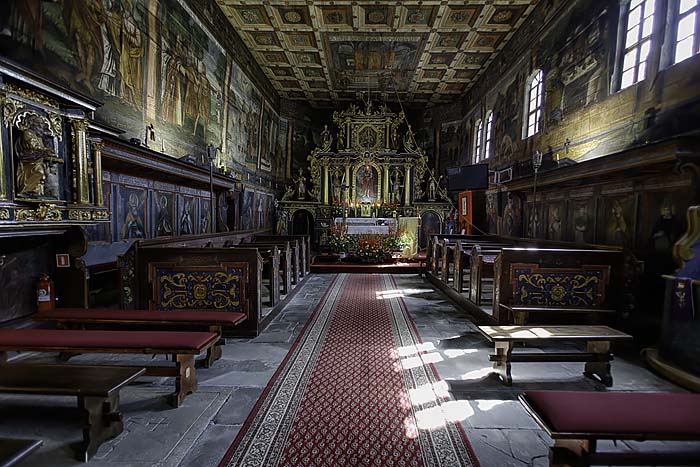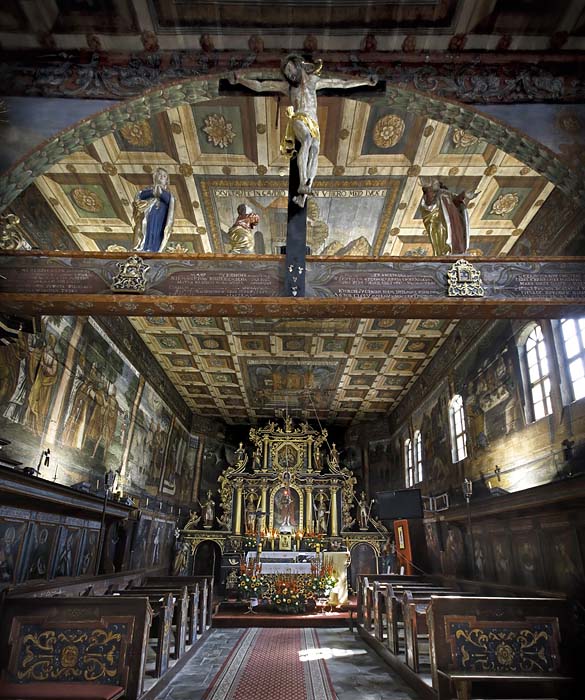Photographers make many decisions for every exposure. Never mind the technical details, let’s take a look at composition. When faced with the decision about how much to include or not, what is the “right” answer?
There is a little wooden church in Orawka, Poland. Built from 1651-1656, it is richly decorated with murals and sculptures. Light from windows on one side penetrates the otherwise dark interior. Additional lighting from a beautiful chandelier, candles, and strategically placed wall sconces add bright spots throughout. That presents the technical problems addressed in my previous blog post. We want to focus (all puns intended) on the carvings, murals, lighting as they pertain to the composition. Here are three different versions of the the same place:

Image 1

Image 2

Image 3
Image 1 gives the impression of the church before the eyes adjust to the dark. You may feel as if you have just entered and are seeing it for the first time. The chandelier glows in the dark. The ceiling murals, altar, and foreground create a frame around the light.
A few steps closer to the altar and a wider angle lens (Image 2) eliminates the chandelier and the semi circular foreground. Now the murals are more visible. It is as if the eyes have adjusted to the dark and the amazing polychrome paintings are revealed.
For #3, the camera is placed in the vertical position and tilted up. Now the emphasis becomes the wooden crucifix. Cropping the bottom eliminates some of the pews that don’t add any information. The lines of the carpet, pews, side murals, all lead the eye to the intricate altar then up to the crucifix. (For reference, the crucifix is directly behind and blocked from view by the chandelier of Image 1.)
So these are three different views made within minutes of one another. What is your artistic vision? That is how you will make decisions about what to include or exclude. That is why two people may stand shoulder to shoulder and walk away with entirely different pictures. This is how I break it down as a formula: Final photograph = creative vision + technique + experience.
